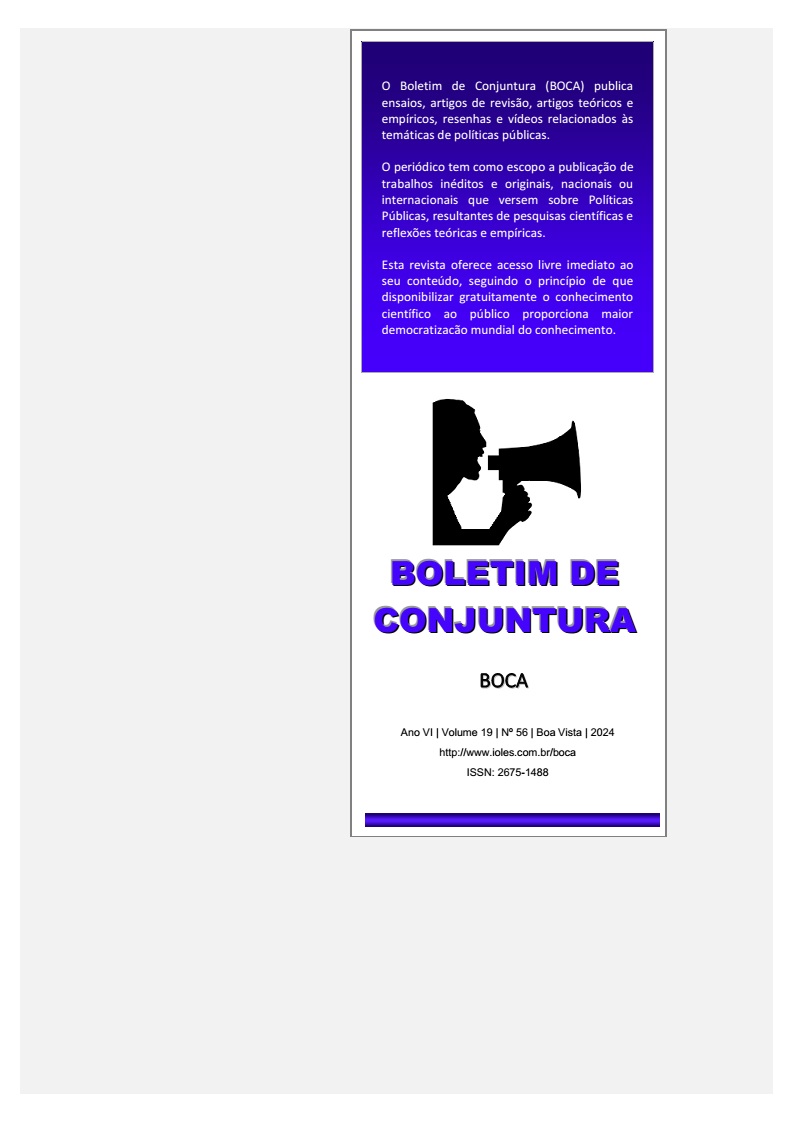PREVALÊNCIA DO DIAGNÓSTICO TARDIO DE FISSURA LABIOPALATINA NO SERVIÇO DE REFERÊNCIA NO ESTADO DA PARAÍBA
##plugins.themes.bootstrap3.article.main##
Resumo
As fissuras labiopalatinas representam as deformidades craniofaciais mais prevalentes na população global. Este estudo tem como objetivo investigar a prevalência de fissuras labiopalatinas no estado da Paraíba, Brasil. Trata-se de um estudo exploratório, retrospectivo e de natureza epidemiológica, com abordagem quantitativa. A pesquisa foi conduzida no Hospital Universitário Lauro Wanderley (UFPB) em duas etapas: a primeira consistiu na coleta de dados dos prontuários de pacientes atendidos pelo Serviço de Fissuras Labiopalatinas (FL/Ps) do hospital. Na segunda etapa, foram aplicadas técnicas de inferência estatística, Regressão Logística, para prever padrões de variáveis e traçar o perfil dos pacientes atendidos. Ao todo, foram registrados 2.638 pacientes, dos quais 870 iniciaram o atendimento tardiamente, sendo a primeira consulta realizada aos cinco anos de idade ou mais. Esse dado aponta para uma possível falha na implementação de políticas de prevenção na atenção básica. Observou-se uma maior concentração de casos nas mesorregiões da Mata Paraibana e Sertão Paraibano, sendo a fissura transforame a que acomete mais estruturas e mais prevalente, as consultas realizadas tardiamente, trazendo comprometimento de diversas funções associadas a esta condição. O modelo logístico indicou que as covariáveis sexo, diagnóstico e mesorregião são significativos ao nível α=0,05 como preditores do acesso tardio ao serviço de referência de FL/P no estado da Paraíba. A taxa de diagnóstico tardio de FL/P no estado foi de 32,98% com aproximadamente 10,5% com idade superior a 20 anos, evidenciando a necessidade urgente de campanhas de prevenção secundária e de diagnóstico precoce, particularmente no contexto da atenção à saúde bucal.
##plugins.themes.bootstrap3.article.details##

Este trabalho está licenciado sob uma licença Creative Commons Attribution 4.0 International License.
Direitos autorais (c) . 
Esta obra está licenciada sob uma licença Creative Commons Atribuição 4.0 Internacional.
Referências
AHMED, M. M. et al. “Association of social and psychological aspects of quality of life and educational level of patients with different orofacial cleft”. Journal of the Pakistan Medical Association, vol. 72, n. 11, 2022
AIYEGBUSI, O. L. et al. “A narrative review of current evidence supporting the implementation of electronic patient-reported outcome measures in the management of chronic diseases”. Therapeutic advances in chronic disease, vol. 12, 2021.
ALIGHIERI, C. et al. “Sociodemographics and quality of life in Dutch-speaking adolescents and adults with and without a cleft lip and/or palate”. The Cleft Palate-Craniofacial Journal, vol. 59, n. 4, 2022
ALLAREDDY, V. et al. “Atlas of Cleft Lip and Palate Surgery”. In: BAILEY, B. J. et al. (eds.). Head and Neck Surgery: Otolaryngology. Filadélfia: Lippincott Williams and Wilkins, 2020.
AMERICAN ACADEMY OF PEDIATRIC DENTISTRY. Management of Patients with Cleft Lip and Palate and Other Craniofacial Anomalies. Washington: American Academy of Pediatric Dentistry, 2023. Disponível em: . Acesso em: 05/05/2024.
AMERICAN CLEFT PALATE-CRANIO FACIAL ASSOCIATION. Parameters for Evaluation and Treatment of Patients With Cleft Lip/Palate or Other Craniofacial Differences. Chapel Hill: ACPA, 2020. Disponível em: . Acesso em: 05/05/2024.
AYCART, M. A.; CATERSON, E. J. “Advances in cleft lip and palate surgery”. Medicina, vol. 59, n. 11, 2023.
BRASIL. Projeto de Lei n. 3.526/2019. Brasília: Senado Federal, 2019. Disponível em: . Acesso em: 30/07/2024.
CHEN, S. X.; VAN KEILEGOM, I. “A goodness-of-fit test for generalized linear models”. Journal of the Royal Statistical Society: Series C, vol. 70, n. 1, 2021.
CUNHA, A. A. et al. “Cuidados à criança com fissura labiopalatina: uma revisão integrativa”. Revista de Pesquisa: Cuidado é Fundamental Online, vol. 6, n. 1, 2020.
DUNWORTH, K. et al. “Aesthetic Outcomes in Cleft Care: Exploring Patterns in Patient-Reported Outcomes Across Adolescence”. Plastic and Reconstructive Surgery, vol. 154, 2023.
FIGUEIREDO, A. P. et al. “Surgical outcomes and quality of life in patients with cleft lip and palate: a 20-year review”. Journal of Craniofacial Surgery, vol. 33, n. 4, 2022.
FREITAS, J. A. S. et al. “Incidência de fissuras lábio-palatinas em crianças nascidas em hospitais universitários do Brasil (2010-2019): Necessidade de políticas públicas regionais”. Journal of Craniofacial Surgery, vol. 32, n. 5, 2021.
GERIN, L. et al. “Factors Associated with Vaccination Adequacy in People Living with HIV: A Cross-Sectional Study”. Vaccines, vol. 12, n. 9, 2024.
HE, X. et al. “The impact of cleft lip/palate on the psychosocial outcomes and academic performance of children: A systematic review”. BMC Pediatrics, vol. 22, 2022.
HUANG, Z. et al. “Proteomic analysis illustrates the potential involvement of motor proteins in cleft palate development”. Scientific Reports, vol. 14, n. 1, 2024.
KUMARI, V. et al. “Application of the Spina Classification in Contemporary Cleft Lip and Palate Research”. International Journal of Oral and Maxillofacial Surgery, vol. 50, n. 3, 2021.
LIM, C. H. et al. “18F-Fluorodeoxyglucose Positron Emission Tomography-Based Risk Score Model for Prediction of Five-Year Survival Outcome after Curative Resection of Non-Small-Cell Lung Cancer”. Cancers, vol. 16, 2024.
MASSENBURG, B. B. et al. “Discussion: Aesthetic outcomes in cleft care: exploring patterns in patient-reported outcomes across adolescence”. Plastic and Reconstructive Surgery, vol. 154, n. 4, 2024.
MENDES, A. L. et al. “Perfil epidemiológico dos 30 anos do serviço de referência em fissuras labiopalatinas do Hospital Universitário Lauro Wanderley”, Anais do I Congresso Nacional Multidisciplinar em Doenças Raras e Anomalias Congênitas. Cabedelo: UNIESP, 2021.
MICHAEL, A. I. et al. “Preoperative quality of life of patients with cleft lip and palate in Nigeria: a multicentre cross-sectional pilot study”. The Pan African Medical Journal, vol. 48, 2024.
RADY, E. H. A. et al. “A comparison study of goodness of fit tests of logistic regression in R: Simulation and application to breast cancer data”. Applied Mathematical Sciences, vol. 7, 2021.
TAO, H. et al. “Insights into the genetic mechanisms of cleft lip and palate: A systematic review”. BMC Medical Genetics, vol. 24, n. 1, 2023.
URMÉNYI, G. L.; FERNANDES, E. C.; URMÉNYI, L. G. “Prevalência de fissuras labiopalatais no Brasil e sua notificação no sistema de informação”. Revista Brasileira de Cirurgia Plástica, vol. 39, n. 2, 2024.
WHO - World Health Organization. Global Strategies for the Prevention and Care of Congenital Anomalies. Geneva: WHO, 2021. Disponível em: . Acesso em: 05/05/2024.


